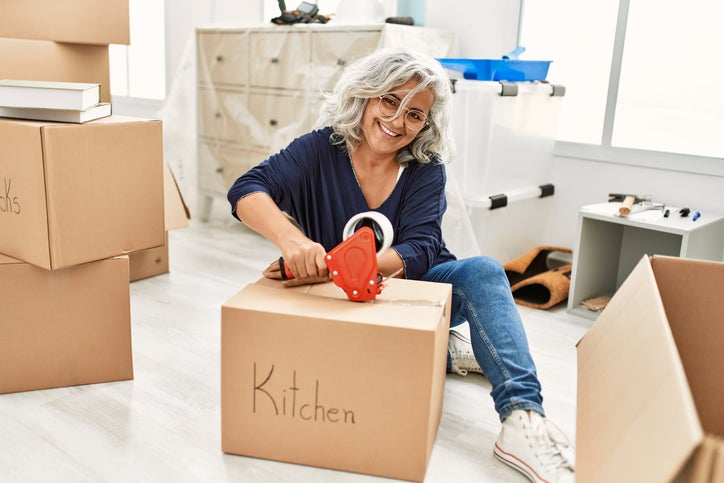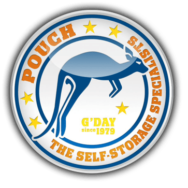-
Eco-Friendly Storage Solutions

With an increase in global awareness of conservation and environmental issues, many people are beginning to change the way they approach everyday life. The mantra “Think globally, act locally” has caused people in all walks of life to consider how personal choices about their homes, communities, and cities can start to have a broader impact on the health of the entire planet. Simple acts of conservation might include walking or biking somewhere rather than driving a car, recycling household waste, or being aware to use faucets and lights sparingly and only when necessary.
Environmental conservation can also apply to how we store our extra goods and equipment, the things that we don’t necessarily need to use every day. Extraneous belongings like these can often best be suited to a closet, attic, or self-storage unit, and how you store your belongings can be just as impactful as where they are stored. Being aware of the different types of storage solutions available can help you find an eco-friendly way to protect and store your extraneous belongings. Common household and self-storage solutions often involve cardboard boxes or plastic tubs but each of these options has downsides for the environment.
What’s Wrong with Cardboard and Plastic?
Whereas storing items inside cardboard and plastic may be a cost-effective option, they each pose environmental concerns. Both materials are commonly used in home storage as well as self-storage but may not be the best choices if you’re also thinking globally.
Plastics
Plastic pollution is a multi-faceted environmental issue with far-reaching consequences.
- Plastic is non-biodegradable and can persist in the environment for hundreds or even thousands of years. This longevity contributes to the accumulation of plastic waste in landfills, oceans, and natural habitats.
- As plastic breaks down, it forms tiny particles called microplastics, which can be ingested by marine life, birds, and even humans. Microplastics can accumulate in the food chain, causing potential health problems.
- Plastic pollution poses a severe threat to wildlife, particularly marine animals. Ingestion of plastic debris can lead to starvation, internal injuries, and death. Entanglement in plastic waste can also cause suffocation, injuries, and restricted movement.
- Plastic production relies on fossil fuels, contributing to resource depletion and greenhouse gas emissions. The extraction and processing of these resources can also cause environmental damage.
- The vast amount of plastic waste generated poses significant challenges for waste management systems. Landfills are filling up, and recycling infrastructure is often inadequate to handle the volume of plastic waste.
Cardboard:
While cardboard is often considered a more environmentally friendly material compared to plastics, it can still have negative environmental impacts if not managed properly. Here are some of the primary ways cardboard can harm the environment:
- Save The Trees: The production of cardboard requires wood pulp, which can contribute to deforestation if not sourced from sustainably managed forests. Deforestation leads to habitat loss, biodiversity decline, and soil erosion.
- Greenhouse Impacts: When cardboard ends up in landfills, it decomposes anaerobically, releasing methane, a potent greenhouse gas that contributes to climate change. Methane is 25 times more potent than carbon dioxide in trapping heat in the atmosphere.
- Production Concerns: The manufacturing process of cardboard involves energy consumption, water usage, and the use of chemicals, which can have environmental impacts.
- Landfill Overload: Although cardboard is recyclable, recycling infrastructure and participation rates vary across regions. Improper disposal of cardboard can lead to landfill accumulation and litter.
Eco-Friendly Storage Alternatives
There are many alternatives to plastic and cardboard that can not only be better for the environment can provide other benefits as well, whether greater security for your items or an added aesthetic touch for your home. Here are some examples:
Rattan Boxes: A rattan box is a versatile storage container made from natural rattan fibers, a type of climbing palm native to Southeast Asia. Rattan is known for being flexible, durable, and lightweight. Rattan boxes are ideal for storing household items, such as blankets, towels, toys, books, or seasonal decorations.
Used Furniture: Upcycling an old bureau or dresser is a great way to conserve while also providing additional storage. A chest of drawers can go in a garage or a storage unit, providing ideal space for clothing, housewares, holiday gear or seasonal apparel.
Glass Jars: Glass jars offer a versatile and sustainable storage solution for a wide variety of items, providing an airtight, durable, and visually pleasing way to organize and preserve a range of household goods. Use them to hold bathroom essentials, dry goods, and craft supplies.
Wooden Crates: Wooden crates offer a sturdy, rustic, and versatile storage solution for a variety of items, providing a charming and durable way to organize and display household goods. They are best for storing blankets and linens, children’s toys, books and magazines, shoes, and seasonal decorations.
Canvas Bins: Canvas containers provide a breathable, lightweight, and aesthetically pleasing way to organize and store household goods. They’re perfect for clothing and accessories, toys, craft supplies, or outdoor gear and supplies.
Wicker Baskets: Wicker baskets offer a provide a natural and sustainable storage solution for a variety of items. Perks include breathability, durability and style for organizing items like clothes, toys, extra pillows, or blankets.
More Earth-Friendly Tips
Conservation doesn’t only have to do with what you use to store your stuff. Here are some simple steps you can take to contribute to an overall more mindful way of life.
- Dare to Declutter: By simply avoiding the urge to get more stuff, you are already making an eco-friendly decision. Careful consideration of your person and household needs can help you curate a minimalist yet effective set of tools, goods, and housewares. A bespoke approach will make sure that you refrain from contributing the landfill buildup while also providing you with a more peaceful and healthy home life.
- Digitize Your Docs: You can help reduce deforestation while also reclaiming extra space around the house and office by implementing a digital approach to documents. Rather than using the printer and file folders for your documents, archiving them digitally can help make sure your files are secure, accessible, and not adding to your storage clutter.
- Repurpose Extra Items: Making storage use out of things you already own can be a great way to eliminate clutter while also being environmentally friendly. For example, shoe boxes can be used to hold office supplies. Old jars can be cleaned and used to store small hardware like screws and bolts. Let your imagination help you find unique upcycling opportunities in your own home.
- Sustainable Kitchen Storage: Reusable silicone food bags can be a great alternative to single-use Ziplock style food bags. Airtight glass containers and reusable beeswax wraps can also help you reduce single-use plastics.
Embracing eco-friendly storage solutions is not just a matter of environmental responsibility but also a testament to our commitment to a sustainable future. By incorporating sustainable practices into our storage choices, we can collectively reduce waste, conserve resources, and foster a harmonious relationship with our planet. Pouch can help you with offsite self-storage needs. Get in touch with us today to learn about how we can assist you.
